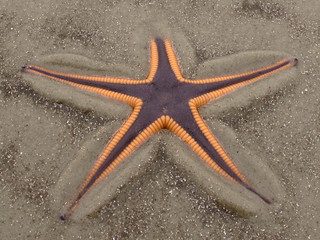 |
| Image by Alan Cressler |
So, y'a know how people do this snow thing? SNOW ANGELS? Drop yourself in some powder and go wild!
Well, la-dee-da!
Starfish can do that TOO! Except, not in snow. not in the winter. Not on land. In sand. in mostly tropical shallow to temperate waters. So there.
I am referring to the widely known "sand star" called
Astropecten, which includes over 100 species present all over the world, in tropical to temperate waters.
Go here to see some awesome pics of Japanese Astropecten and related spp. Most occur in shallows but some live in deeper-waters.
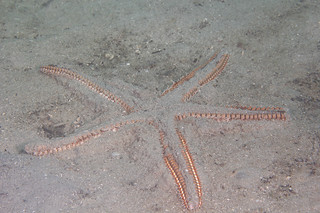 |
| Image by Kevin Bryant |
Astropecten is often confused with Archaster typicus aka the "fake Astropecten" aka the "typical star" aka the "other sand star." Go here to see the difference. But one important difference? you will NEVER catch
Astropecten pseudocopulating! Bfah!
Here's a nice image of
Astropecten indicus from Singapore, illustrating the animal next to the star-shaped impression it makes in the sand.
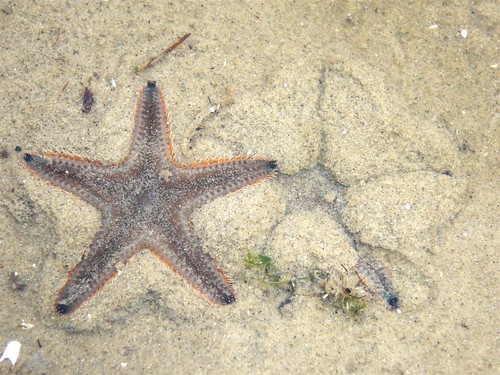 |
| Image by Kok Sheng |
Here is an excellent photo sequence of a species of
Astropecten from Iran, showing a full range of sitting on the sand and burying itself.
 |
| Image by Hamed Saber |
Burial in
Astropecten can be quite rapid. It accomplishes this via a combination of its pointed (rather than suckered) tube feet in conjunction with its many spines which are moveable and are used to help push itself into the sand.
Astropecten is among the fastest of known starfish.
Image below of an
Astropecten from Singapore.
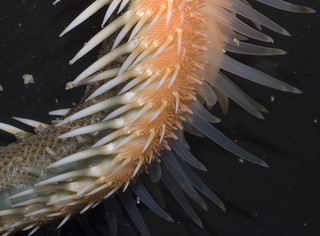 |
| Image by Wildsingapore. |
Pictures are nice. But why stop there? Here's a quick 30 second video of
Astropecten from Singapore burying itself and vanishing before your very eyes!
Which famous Simpsons gif meme doe
s Astropecten remind you of?
This one is probably one of the best videos of Astropecten burying and reburying itself. A video from the Enoshima aquarium of A. polyacanthus.
Although they dig, they are not, strictly speaking, infaunal. They live buried right under the surface of the sand...
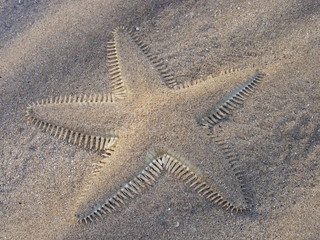 |
| image by Bill & Mark Bell |
Where, they are often digging through the sediment trying to find goodies to eat, such as this clam. But really whatever they find, they will swallow and devour. Note that
Astropecten and its relatives LACK an eversible stomach (that you might see in other starfish). So they literally can ONLY swallow their prey.. This image is fr.
A. aurantiacus in the N. Atlantic somewhere..
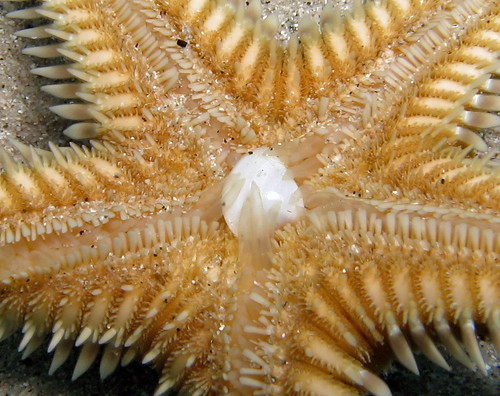
As I mentioned,
Astropecten occurs widely around the world. And is quite diverse. Here is
Astropecten articulatus from Georgia (south coast of the US)
 |
| Image by Alan Cressler |
Astropecten sp. from Singapore. Cool racing stripes!
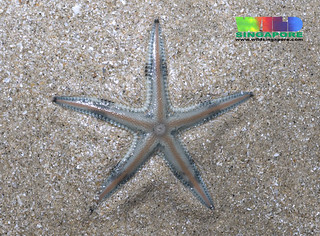 |
| Image by Wild Singapore |
Here's a pic of Astropecten latespinosus from Japan
 |
| Image by Yoichi Kogure! |
The substrate/sediment type can vary also.. Some live in very fine sediments, such as this Italian Astropecten, possibly A. irregularis
 |
| Image by comunerimini |
Astropecten aurantiacus in sandy sediment...
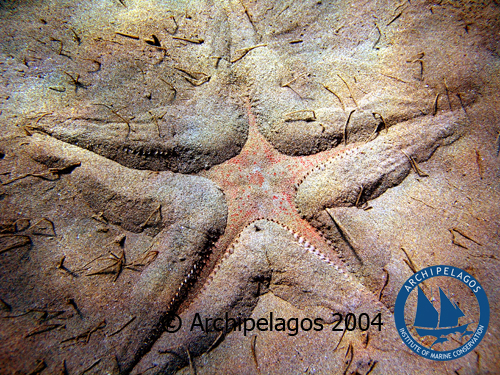 |
| Image by Archipelagos Institute of Marine Conservation |
Whereas others live in fairly coarse, sandy type sediments.. such as this
Astropecten bispinosus from Greece.
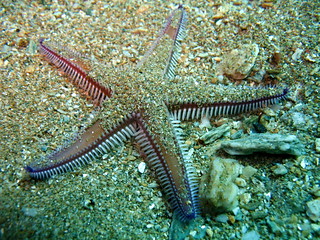 |
| Image by sarsifa |
Astropecten sp. Not sure where this was taken..I think the Mediterranean? But again, coarse sediment.
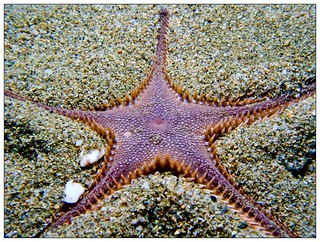 |
| Image by Dimitrious Poursanidis |
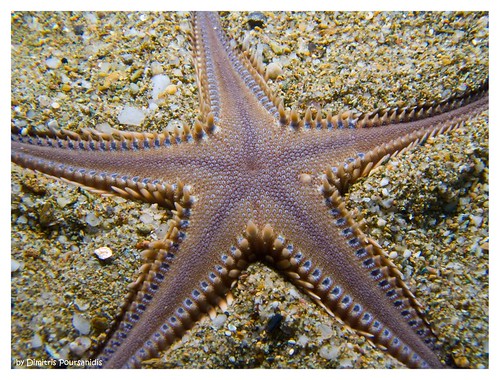 |
| Image by Dimitrious Poursanidis |
What's that you say? You wanted to see more fabulous video of
Astropecten from around the world burying themselves in sand? YOU GOT IT.

















1 comment:
Seriously? An entire blog devoted to Echinodermata?
I guess my only remaining question is: how am I just now learning about this?!
Awesome blog! I can't wait to dig into it.
Post a Comment